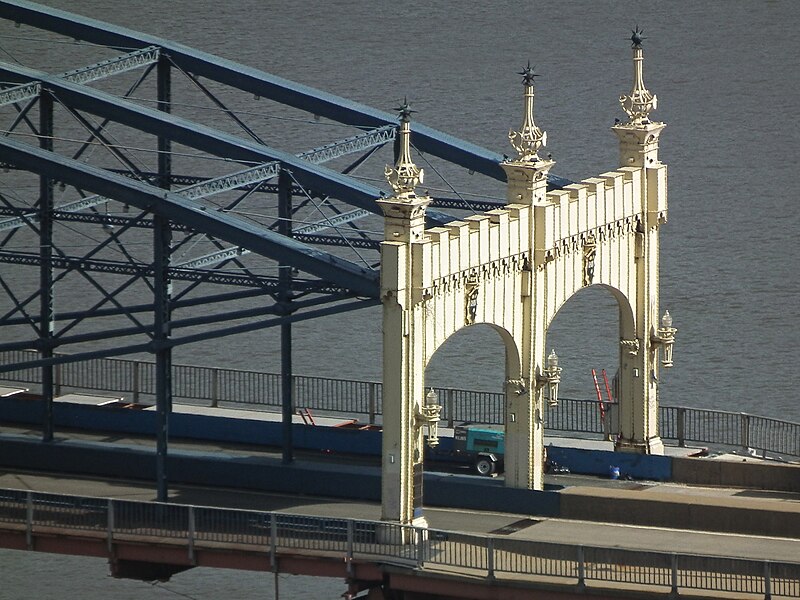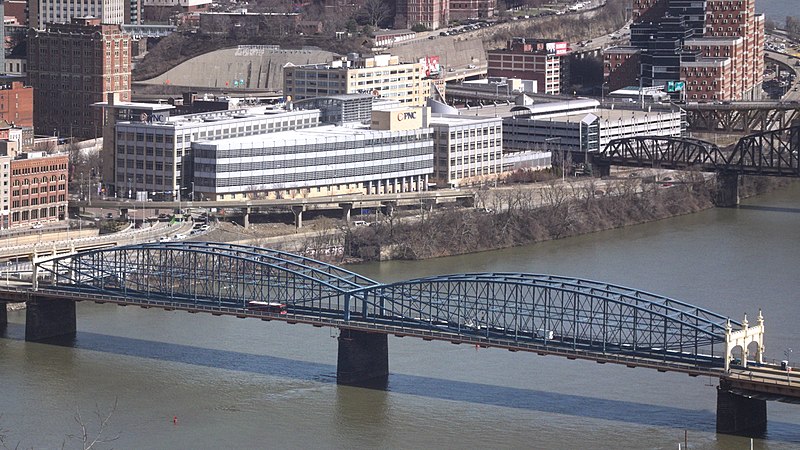
Comments

The current portals are not original; they were built when the upstream span was widened in 1915. The original bridge was designed by Gustav Lindenthal; the current portals were designed by Stanley L. Roush, who was responsible for many prominent transportation-related projects, including the entrances to the Liberty Tubes and Armstrong Tunnel and the terminal at the Allegheny County Airport.
The bridge is the oldest through-truss bridge in the United States, and one of very few with a Pauli or lenticular truss. The piers are even older; they were reused from the previous bridge, designed by John Roebling after the Great Fire of 1845 destroyed the old wooden covered bridge that had been put up in 1818.


View of the Great Fire of Pittsburgh, by William C. Wall (1846)
In 1845 a catastrophic fire swept through the booming Western city of Pittsburgh. Much of the city was destroyed, including the covered wooden Monongahela bridge, where the Smithfield Street Bridge is now. William C. Wall, a local painter of some skill, saw an artistic and financial opportunity and painted small views of the destruction, which seem to have been reproduced as prints (prints of great catastrophes being very popular among some of the more morose and sentimental Victorians). The next year he created a larger painting with a view of the fire; though he obviously did not have the fire in front of him as he painted, he seems to have depicted fairly accurately the extent of the conflagration—note the area to the west of the bridge that was spared the flames, an area that included the Burke Building, which still stands today.
These three paintings hang together in the Carnegie Museum of Art’s gallery of “European and American Art ca. 1820-1860.” Finding that there seemed to be no good reproductions of them on the Internet, old Pa Pitt took these, which give a fair impression of the pictures as they appear on the wall.

Pittsburgh After the Fire from Birmingham, by William C. Wall (1845)

Pittsburgh After the Fire from Boyd’s Hill, by William C. Wall (1845)